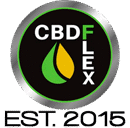Finding Your Sweet Spot: The Best Way to Take CBD for Pain Relief
Chronic pain can significantly impact your quality of life, making even simple daily activities a struggle. As more people explore natural alternatives for…
Chronic pain can significantly impact your quality of life, making even simple daily activities a struggle. As more people explore natural alternatives for pain management, CBD (cannabidiol) has emerged as a popular option. But with a plethora of products available, the question remains: What is the best way to take CBD for pain?
This comprehensive guide will delve into the various methods of consuming CBD, helping you understand their pros, cons, and how to choose the right approach to effectively take CBD for pain.
Understanding CBD and its Potential for Pain Relief
CBD is a non-psychoactive compound derived from the cannabis plant. Unlike its counterpart THC, CBD doesn’t produce a “high.” Instead, it interacts with the body’s endocannabinoid system (ECS), a complex network of receptors that plays a crucial role in regulating various bodily functions, including pain perception, inflammation, mood, and sleep.
Research suggests that CBD can help manage pain by:
- Reducing inflammation: Inflammation is a significant contributor to many types of chronic pain.
- Interacting with pain receptors: CBD may influence how the brain perceives pain signals.
- Promoting relaxation and reducing anxiety: Chronic pain often comes hand-in-hand with anxiety and stress, and CBD’s calming effects can provide additional relief.
Exploring Different Ways to Take CBD for Pain
The market offers a wide array of CBD products, each with its own unique characteristics regarding absorption, onset time, and duration of effects. Let’s explore the most common methods to take CBD for pain:
1. CBD Oil and Tinctures:
- What it is: CBD oil is typically extracted from hemp and mixed with a carrier oil like MCT oil, hemp seed oil, or olive oil. Tinctures are similar but often use an alcohol base.
- How to use it: Usually administered sublingually (under the tongue) using a dropper. Hold the oil under your tongue for 30-60 seconds before swallowing.
- Pros: Offers relatively fast absorption as it enters the bloodstream directly through the mucous membranes. Allows for precise dosage control.
- Cons: The taste can be earthy or grassy, which some people find unpleasant.
- Best for: Those seeking relatively quick relief and precise dosing.
2. CBD Capsules and Pills:
- What it is: CBD oil or isolate is encapsulated in a convenient pill or capsule form.
- How to use it: Taken orally with water, just like any other supplement.
- Pros: Easy to use and discreet. Provides a consistent and pre-measured dose. No taste.
- Cons: Absorption rate is slower as it needs to go through the digestive system. Onset of effects can take longer.
- Best for: Individuals who prefer a tasteless and convenient option with a longer-lasting effect, although the onset is slower.
3. CBD Edibles (CBD Gummies, Chocolates, etc.):
- What it is: CBD infused into food items like gummies, chocolates, candies, and baked goods.
- How to use it: Consumed orally like regular food.
- Pros: Tasty and enjoyable way to take CBD for pain. Discreet and easy to carry.
- Cons: Similar to capsules, absorption is slower and less predictable due to the digestive process. Dosage can be less precise depending on the product. Often contain added sugar.
- Best for: Those who dislike the taste of CBD oil and prefer a more palatable option for longer-lasting, albeit slower, relief.
4. CBD Topicals (Creams, Balms, Lotions):
- What it is: CBD-infused creams, balms, lotions, and salves applied directly to the skin.
- How to use it: Apply liberally to the affected area and massage gently.
- Pros: Allows for targeted relief to specific areas of pain, such as sore muscles or joints. Minimal systemic absorption.
- Cons: May not be as effective for widespread or deep pain.
- Best for: Localized pain, muscle soreness, joint pain, and skin conditions.
5. Vaping CBD:
- What it is: Involves inhaling CBD vapor using a vape pen or vaporizer.
- How to use it: Follow the instructions for your specific vaping device.
- Pros: Fastest absorption rate as CBD enters the bloodstream directly through the lungs. Offers immediate relief.
- Cons: Potential risks associated with vaping, especially concerning lung health. Effects tend to be shorter-lived, requiring more frequent use. Less discreet.
- Best for: Those seeking very rapid relief for acute pain, but it’s crucial to be aware of the potential health risks.
So, What Is the Best Way to Take CBD for Pain?
The truth is, there’s no single “best” way to take CBD for pain. The ideal method depends on several individual factors, including:
- Type and location of pain: Localized pain might benefit from topicals, while widespread pain might respond better to oral methods.
- Desired speed of relief: Vaping and sublingual oils offer the fastest onset, while edibles and capsules take longer.
- Duration of effects: Edibles and capsules tend to provide longer-lasting relief compared to vaping or sublingual oils.
- Personal preference: Some people prefer the convenience of capsules, while others enjoy the taste of edibles or the targeted relief of topicals.
- Bioavailability: This refers to the amount of CBD that actually enters your bloodstream. Sublingual administration generally has higher bioavailability than edibles or capsules.
Experimentation is key. You might need to try different methods and products to find what works best for your specific needs and how your body responds to CBD.
Important Considerations When Taking CBD for Pain:
- Start with a low dose and gradually increase: This allows you to monitor your body’s reaction and find the optimal dosage.
- Choose high-quality products from reputable brands: Look for products that are third-party tested for potency and purity.
- Consider the full-spectrum vs. broad-spectrum vs. isolate: Full-spectrum CBD contains all the natural compounds found in the hemp plant, including trace amounts of THC (less than 0.3%). Broad-spectrum contains most compounds but no THC. Isolate is pure CBD. The “entourage effect” suggests that full-spectrum products may be more effective due to the synergistic interaction of various cannabinoids and terpenes.
- Consult with your doctor: Especially if you are taking other medications, as CBD can interact with certain drugs. Your doctor can provide personalized advice on whether CBD is right for you and the appropriate dosage.
Conclusion: Finding Your Personalized CBD Pain Relief Strategy
Navigating the world of CBD can feel overwhelming, but understanding the different ways to take CBD for pain is the first step towards finding effective relief. By considering your individual needs, experimenting with various methods, and prioritizing high-quality products, you can discover the optimal approach to integrate CBD into your pain management routine and improve your overall well-being.
FAQ:

How long does it take for CBD to work for pain?
Onset time varies depending on the method. Vaping and sublingual oils can provide relief within minutes, while edibles and capsules can take 30-90 minutes. Topicals offer localized relief relatively quickly.
What is the best dosage of CBD for pain?
There’s no one-size-fits-all dosage. Start with a low dose (e.g., 10-20mg) and gradually increase until you find the relief you need. It’s best to consult with a healthcare professional for personalized dosage recommendations.
Are there any side effects of taking CBD for pain?
CBD is generally well-tolerated, but some people may experience mild side effects like fatigue, diarrhea, or changes in appetite. These are usually temporary and dose-dependent.
Can I overdose on CBD?
CBD is considered non-toxic, and overdosing is unlikely. However, taking very high doses might increase the risk of side effects.
Is CBD legal to take for pain?
The legality of CBD varies depending on your location. In many places, CBD derived from hemp (with less than 0.3% THC) is legal. Check your local laws before purchasing or using CBD products.







